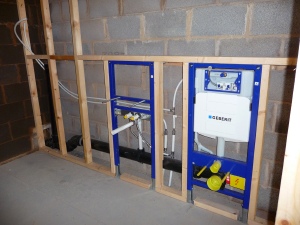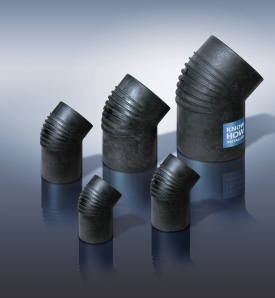Bathroom noise — the invisible menace

The noise of soil stacks in operation is distasteful to many people, especially in hotels and apartment blocks. Victoria Willis of Geberit shares some practical ideas on minimising the issue.
Bathrooms are noisy places. In flats, hotels and public buildings in particular, this noise can be irritating, embarrassing, and for guests trying to get a good night’s sleep, intolerable. We recently surveyed a thousand UK homeowners to find out how end users feel about sanitaryware sounds, the results of which led to us pre advice for specifiers and installers on how to minimise the problem.
According to our recent survey, 70% of people who have stayed in hotels have been bothered by bathroom noises, with more than half of those making a complaint or leaving a bad review. That’s a very high proportion of people feeling dissatisfied with what is often a ‘treat’ or even luxury experience.
Thanks to the Internet, customer feedback is easier to provide and potentially more damaging than ever before. Hotel owners should be taking noise seriously, with specifiers and installers making sure the right steps are considered when a hotel is built or refurbished to prevent customer dissatisfaction.
As noise is an invisible problem, it is often ignored, or not thought about in any detail. This is a mistake, as unwanted sounds can prove more of an issue than something visually jarring. For example, when it comes to cisterns and drainage, waste-water noise is often neglected in planning, with installation elements having direct contact with walls and floors and standard drainage pipes specified that do not absorb sound.
 |
| Keeping sanitaryware such as WC pans decoupled from the building's construction will minimise solid-borne sound. |
Pipework in particular can be very noisy, with solid-borne sound travelling through walls in a building. In hotels and apartments where the drainage stack serves multiple floors, solid-borne noises are exacerbated. Many think that by simply insulating the pipes they are going far enough to reduce noise, but this simply isn't the case.
Even if you follow the standards set out to try and prevent noise, you may not be going far enough to really deal with the problem. Pipe guidance EN14366 was created as an attempt to provide standardised installation by comparing different pipe systems, but in our opinion falls short. Its main focus is the installation of exposed drainage pipes, which are very rarely seen in buildings, with advice based on fixed flow rates. In reality, the flow rate in a soil stack can vary from nothing to several litres per second; in most cases noise is transient noise due to the pattern of discharge from sanitary appliances.
To limit pipe sounds the whole system must be considered — from toilet to drain. Sanitary noises should never be viewed in isolation to drainage noise; a whole-system approach is essential.
Water running through the sanitaryware and plumbing, is the cause of all this noise — Running from taps, being flushed down toilets and creating disturbances in the soil stack due to discharge and impact in the system. Water impact often occurs in the transitional areas between horizontal and vertical pipes.
One of the key ways to minimise water noises is through well thought-out pipe design.
• Pipe offsets should be staged so the sound generated as water flows through is reduced.
• Sharp changes in direction should be avoided where possible.
• Shallow bends should be used for offsets in the stack. Every bend or offset is a source of noise due to the force of water at these points.
• Use brackets with a rubber inlay, and ensure the brackets are kept free of debris like concrete.
• Don’t overtighten brackets.
 |
| Geberit’s Silent-db20 pipework comes complete with sound insulation, making it ideal for hotel projects with multiple bathroom users. It is made from a mineral reinforced plastic, so it is robust and weighty, effectively reducing natural vibration and the sound it generates. Ribs at impact points deaden sound. |
To further enhance the benefits of sound-reducing pipe design, specialist pipework is also available. By increasing density, through mixing stone into the polyethylene and including ribs at impact points, sound is reduced.
Once the foundations of good pipework design and installation have been achieved, choosing quieter sanitaryware will further enhance a sound-reducing bathroom scheme. Doing away with the pedestal and opting for wall-hung is a design trend that also lends itself to quieter bathrooms.
Wall-hung prevents noise vibration through the floor, with specific products including features such as quiet-filling valves, acoustic-lined brackets and rubber-lined push rods, as well as a jacket around the cistern itself. It is also best to de-couple the WC from the building's construction to minimise solid-borne sound. Pre-wall acoustic de-couplers sit on a rubber mount fitted to floors and ceilings.
The modern building has to perform better than it ever has — reducing its environmental impact, being more energy efficient, looking the part and meeting the requirements of an ever-more critical end user.
For buildings relying on a good experience from visitors, the last point is an important one, and the conveniences are often the thing that can make or break a guests’ opinion. Just because we can’t ‘see’ noise, doesn’t mean it’s not extremely important.
Victoria Willis is product manager with Geberit.







